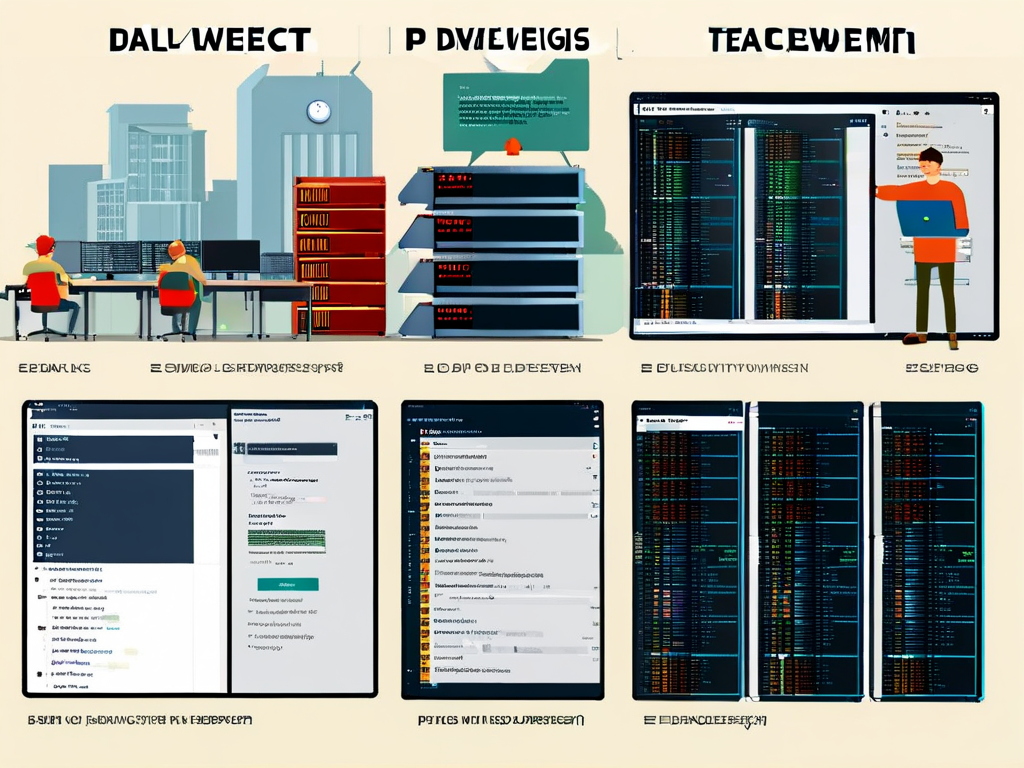In modern backend development, coordinating database operations across multiple developers presents both technical and organizational challenges. As teams grow and projects scale, implementing structured approaches becomes critical to maintain data integrity and development efficiency. This article explores practical strategies for managing database workflows in collaborative environments.

Version-Controlled Schema Changes
Adopting database migration tools like Liquibase or Flyway ensures controlled schema evolution. Consider this SQL migration example:
-- V1__create_users_table.sql
CREATE TABLE users (
id SERIAL PRIMARY KEY,
email VARCHAR(255) UNIQUE NOT NULL,
created_at TIMESTAMP DEFAULT CURRENT_TIMESTAMP
);
Maintain sequential migration files in source control, enabling developers to apply changes through standardized scripts rather than direct database modifications. This practice prevents schema drift and provides audit trails for structural modifications.
Environment Isolation Strategies
Establish separate database instances for different development stages:
- Local Development: Individual sandbox databases
- Testing: Shared instance for QA verification
- Staging: Production-like configuration
- Production: Live deployment
Implement connection security through environment-specific credentials stored in encrypted configuration files or secret managers. For PostgreSQL, use role-based access control:
CREATE ROLE dev_team WITH LOGIN PASSWORD 'secure_password'; GRANT CONNECT ON DATABASE staging_db TO dev_team;
Conflict Resolution Protocols
When concurrent schema modifications occur, follow this resolution workflow:
- Immediate team notification through collaboration platforms
- Joint analysis of migration file conflicts
- Schema version rollback if necessary
- Sequential re-application of validated changes
Maintain an incident log documenting resolution processes and lessons learned.
Automated Testing Integration
Incorporate database validation into CI/CD pipelines:
# Sample pytest database validation
def test_schema_migrations():
engine = create_test_engine()
Base.metadata.create_all(engine)
with engine.connect() as conn:
result = conn.execute("SELECT table_name FROM information_schema.tables")
assert 'users' in [row[0] for row in result]
This automated verification catches structural issues before deployment to production environments.
Documentation Standards
Maintain a living database documentation repository containing:
- Entity-Relationship Diagrams (ERDs) updated with each release
- Data dictionary explaining field purposes and constraints
- API endpoint documentation for data access layers
- Migration history with business context for major changes
Performance Considerations
Monitor query efficiency across environments using tools like pg_stat_statements for PostgreSQL. Establish indexing guidelines:
-- Example partial index CREATE INDEX idx_active_users ON users(email) WHERE is_active = true;
Conduct quarterly query optimization workshops where developers review slow-performing operations.
Security Best Practices
Implement multi-layered protection measures:
- Row-level security policies for sensitive data
- Regular credential rotation schedules
- Automated backup verification procedures
- Encryption-at-rest for all environments
For financial systems, add column-level encryption:
// Example Java encryption handler
public String encryptData(String plaintext) {
Cipher cipher = Cipher.getInstance("AES/GCM/NoPadding");
cipher.init(Cipher.ENCRYPT_MODE, secretKey);
byte[] iv = cipher.getIV();
return Base64.getEncoder().encodeToString(iv) + ":" + Base64.getEncoder().encodeToString(cipher.doFinal(plaintext.getBytes()));
}
Collaboration Culture
Foster team practices through:
- Weekly schema review meetings
- Pair programming sessions for complex migrations
- Shared ownership of database monitoring dashboards
- Cross-training on backup restoration procedures
As projects evolve, periodically reassess database strategies through retrospectives. Track metrics like deployment success rates and incident recovery times to measure process effectiveness. By combining technical solutions with team coordination practices, development teams can maintain robust database systems while supporting agile delivery requirements.



